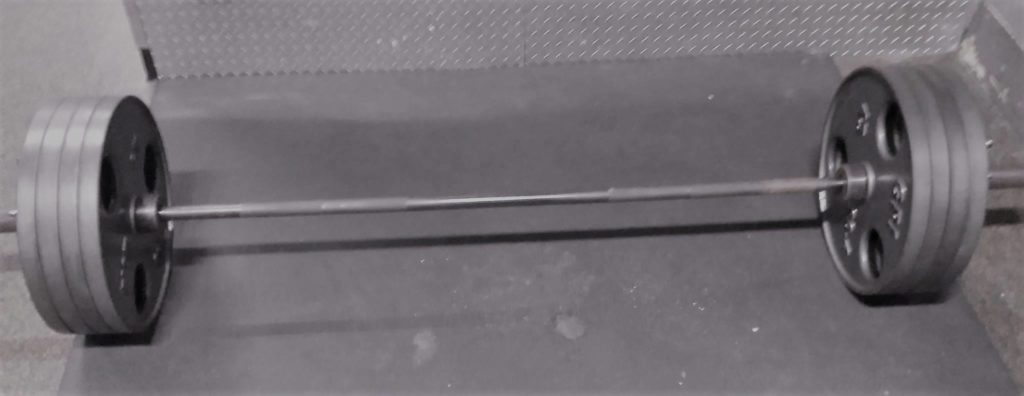by Forest Crosbie
The first and second parts of this series detailed two of the three training days that make up my favorite training split, as well as why I choose to structure my workouts the way I do. Today’s posting then, will represent the conclusion of that trilogy, and the missing link in the chain of gains. This third and final chapter deals with pull day, a workout as challenging as it is rewarding.
My first order of business on pull day is quite possibly the single best exercise out there for developing total body size and strength. Deadlifts directly work almost every major muscle group in the body, from the legs and glutes to the back and core, and even the forearms. This makes them extremely taxing to perform, but also very effective when done consistently. Indeed, if I had to choose only one weighted exercise to do for the rest of my life, it would almost certainly be deadlifts. The movement pattern itself is also a very functional one with real-world applications: lifting a heavy object off the floor. While there are many ways to deadlift, the three most popular barbell variations include conventional, sumo, and trap bar. All three have their merits, but my personal preference is to pull sumo stance or with a trap bar, because doing so allows me to keep a slightly more upright posture, reducing strain on the lower back. The hexagonal trap bar has the added benefit of sparing the shins from being scraped and battered by the barbell on heavy deadlifts, but hey, a little blood on pull day builds character. 😉

Deadlifts done, I then move on to pull-ups. Similar to my push day protocol, I like to start things off with a vertical pull and work my way down from there. Pull-ups are another indispensable exercise that is hard to beat when it comes to targeting the muscles of the middle back, and there are a number of ways to do them as well. Keeping the hands pronated (traditional pull-up grip) places greater emphasis on the lats, while allowing the hands to supinate (chin-up grip) allows the biceps to provide more assistance as a synergist to the movement, and a neutral grip splits the difference between the two. I like to rotate through each hand position in my workouts, but neutral grip is actually my favorite, as I find it places my wrists in the most natural position from which to pull. For today’s rep range (8-12 reps), added resistance in the form of a chain belt and weight plate is needed to ensure maximal effort on every set.
Next up on the docket is a horizontal pull to complement the vertical one. My go-to exercise for this movement pattern is a supported dumbbell row. Many lifters are partial to barbell bent-over rows for adding thickness to the back, but owing to my history of lower back pain I find dumbbell rows to be preferable, as they allow me to deload the lumbar spine when working with heavy weights. The iso-lateral nature of the exercise also makes for a better mind-muscle connection with the lats, which are sometimes a difficult muscle group to really “feel” during training. 4 sets on each side gets the job done.
The final heavy compound lift of the day is one of my personal favorites – barbell upright rows. While some might consider them to be merely a shoulder exercise, upright rows are also excellent for developing the muscles of the upper back. I use a narrow grip on the barbell to maximize engagement of the trapezius, whereas a wider grip would emphasize the deltoids more. Heavy upright rows are another fundamental movement, and one that I consider instrumental in the development of a herculean physique. Using an EZ curl bar will help minimize strain to the wrists, but dumbbells or cable apparatus are effective alternatives as well.
Today’s workout finisher consists of a superset of two lighter exercises: cable face pulls and seated dumbbell curls. Face pulls are a great burnout exercise for the upper back, and also an excellent means of counteracting the rounded shoulders and “desk jockey” posture that many of us may tend to develop if we’re not careful. The biceps themselves do not require a high volume of isolation work, since they are a synergist mover on almost every other exercise I’ve done today. However, finishing off with a few sets of curls provides a nice pump, and ensures that no stone is left unturned for muscle growth. I like to do them seated against a backrest because doing so immobilizes the torso, thereby eliminating much of the potential for cheating in the movement.
My rest intervals are a bit longer for this workout: 2-3 minutes on the heavy compound lifts to allow for maximal recovery, and 60-90 seconds for the workout finisher. The full set and rep breakdown is as follows:
- (5 minutes of light cardio and dynamic stretching)
- Sumo Deadlifts: 4 x 8
- Weighted Pull-Ups: 4 x 8-12
- Dumbbell Rows: 4 x 8-12@
- EZ Bar Upright Rows: 4 x 8-12
- Seated Dumbbell Curls: 4 x 12-15
(superset with)
- Cable Face Pulls: 4 x 12-15
That’s it for today, but stay tuned for more training tips in the future! 🙂



